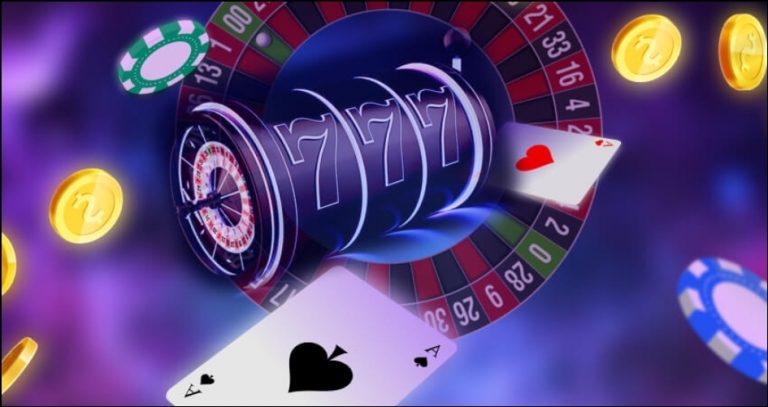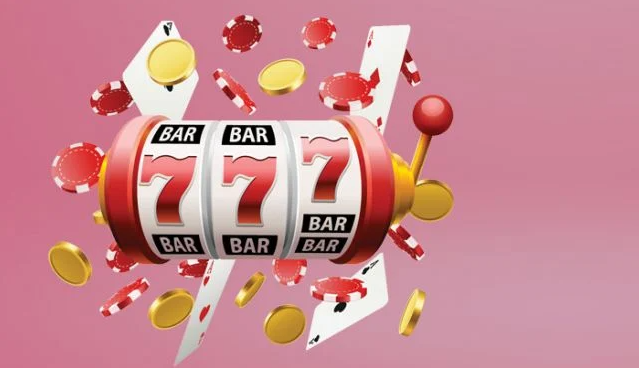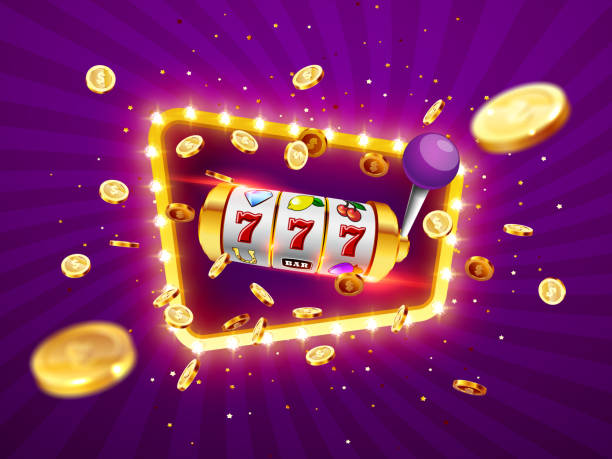Session Length & RTP Pokies Australia: What to Expect
When stepping into the world of online gaming, understanding how your playing time affects results becomes crucial for making informed decisions. The relationship between session duration and game outcomes follows predictable patterns that every player should recognize. Whether you’re spinning for five minutes or five hours, the mathematics behind these games operates on principles that become clearer with extended play.
RTP meaning refers to Return to Player, which indicates the theoretical percentage of wagered money that slot games will pay back to players over extended periods of play. Understand how Session length impacts your real RTP results.
🧭 Quick takeaway: Short sessions = entertainment, long sessions = measurement. Decide your goal before you press spin.
How Session Duration Affects Outcomes
The length of your gaming session plays a fundamental role in determining what kind of results you’re likely to see. During brief playing periods, the natural volatility of games dominates the experience, creating wild swings that can lead to either substantial wins or quick losses. These short-term fluctuations represent the exciting unpredictability that draws many players to gaming, but they don’t reflect the true mathematical nature of the games.
Short vs Long Sessions: Variance Decay
Short gaming sessions typically last anywhere from 10 to 100 spins, creating an environment where variance reigns supreme. During these brief encounters with RTP pokies Australia games, players might experience results that deviate significantly from published return rates. A player might walk away with double their starting bankroll or lose everything quickly, and neither outcome should surprise anyone familiar with probability theory.
The transition from high to low variance happens gradually rather than suddenly. Consider these typical patterns we observe:
- 0-50 spins: Extreme volatility with results ranging from -100% to +500% of initial stake
- 50-200 spins: High volatility beginning to moderate, typical swings of -75% to +200%
- 200-500 spins: Medium volatility emerging with ranges narrowing to -50% to +100%
- 500+ spins: Lower volatility predominating, results clustering within -30% to +50%
📊 Tracking tip: Log your spin count and net result every 50–100 spins to “see” variance decay over time.
Understanding the Impact of Session Length on RTP
The RTP meaning becomes clearer when examined through the lens of session duration. Return to Player percentages represent long-term mathematical expectations rather than short-term guarantees. A game advertising 96% return doesn’t promise that every hundred-dollar session will return ninety-six dollars; instead, it indicates the theoretical return over millions of spins across all players.
What is RTP? It’s a crucial mathematical measure that helps players understand the long-term payout potential of their favorite pokie games.
Short sessions provide insufficient data for these percentages to manifest reliably. The mathematical principles governing what is RTP require substantial sample sizes before theoretical returns align with actual results. This misalignment between expectation and reality during brief play periods creates both the excitement and frustration that characterize gaming experiences. Players experiencing extraordinary luck during short sessions aren’t defying mathematics; they’re simply occupying temporary positions on the extreme ends of probability distributions.
🧮 Budget hint: Expected cost ≈ (1 − RTP) × total wagered. Example: 96% RTP → ~4% expected cost over large samples.
Why Longer Play Smooths Out Variance
Extended gaming sessions act like statistical smoothing functions, gradually revealing the true nature of RTP pokies behavior. The mathematical principle known as the Law of Large Numbers ensures that as trial quantities increase, observed frequencies converge toward theoretical probabilities. This convergence doesn’t happen instantly but follows predictable patterns that experienced players learn to recognize.
The smoothing effect of extended play creates more predictable gaming experiences without eliminating entertainment value. Players report that longer sessions feel less like gambling and more like entertainment with known costs. This shift in perception occurs because outcomes become more predictable even while individual spins remain completely random. The paradox of increased predictability despite maintained randomness represents one of probability theory’s most fascinating aspects.
Consider how this smoothing manifests in actual play:
-
- Initial volatility creates dramatic swings that capture attention
- Continued play begins moderating these swings
- Patterns emerge showing convergence toward expected values
- Final results align more closely with theoretical predictions
- Overall experience feels more controlled despite unchanged randomness
📌 Practical cue: If your plan is to “average out” results, size bets conservatively so your bankroll survives 500–1,000+ spins.
Number of Spins Required for Stability
Achieving stable outcomes in gaming requires understanding the relationship between spin quantity and result reliability. The question of how many spins constitute “enough” doesn’t have a simple answer because it depends on desired confidence levels and acceptable deviation ranges. However, statistical analysis provides guidelines that help players set realistic expectations for their sessions.
RTP pokies Australia typically offer return percentages ranging from 94% to 98%, making them some of the most favorable gaming options for Australian players seeking better odds.
Spins Needed for Stable Outcomes
Statistical stability in gaming outcomes follows predictable thresholds that players should understand. The first threshold occurs around 100-200 spins, where extreme outliers become less common though still possible. This initial stabilization provides hints about game behavior without offering reliable predictions about future results.
The second important threshold appears near 1,000 spins, where outcomes begin clustering noticeably around expected values. Players reaching this milestone often report feeling they finally “understand” the game’s true nature. The variance reduction at this level makes bankroll management more predictable while maintaining sufficient excitement to keep sessions engaging. This balance between predictability and entertainment represents the sweet spot many experienced players seek.
🧪 Milestone idea: Plan sessions in blocks (e.g., 250, 500, 1,000 spins) to compare how results tighten with scale.
Statistical Concepts Behind RTP Normalization
The mathematics underlying rtp casino normalization involves several interconnected statistical principles. Standard deviation measures how far individual results typically stray from average values, with this measurement decreasing proportionally to the square root of trial quantity. This relationship means quadrupling spin count only halves expected deviation, explaining why achieving stability requires such extensive play.
🧠 Remember: Variance shrinks ~with √N. Doubling spins won’t “fix” results—scaling takes time.
How Many Spins Are Enough for Realistic Expectations
Determining adequate spin counts for realistic expectation setting depends on individual goals and risk tolerance. Players seeking entertainment without concern for mathematical precision might find 50-100 spins sufficient for an enjoyable experience. Those interested in understanding game behavior patterns should aim for at least 500-1,000 spins to observe meaningful trends.
Australian gamblers should always check RTP pokies Australia before playing, as higher return percentages significantly improve their chances of winning over time.
Setting realistic expectations requires acknowledging that even thousands of spins provide only estimates rather than guarantees about future performance. The probabilistic nature of gaming means uncertainty never completely disappears, though it diminishes with increased data. Players who accept this inherent uncertainty while understanding how it decreases over time position themselves for more satisfying gaming experiences.
Recommended spin targets for different objectives:
-
-
- Casual entertainment: 50-200 spins per session
- Pattern observation: 500-1,000 spins minimum
- Statistical analysis: 2,000-5,000 spins required
- Professional evaluation: 10,000+ spins necessary
-
🧾 Plan the bankroll: choose a stake that lets you reach your spin target without exceeding your loss limit.
Scheduling Breaks to Improve Play
Strategic break scheduling represents an often-overlooked aspect of optimizing gaming sessions. The human mind requires periodic rest to maintain peak performance, particularly during activities requiring concentration and decision-making. Our casino encourages players to incorporate regular breaks into their gaming routines, recognizing that refreshed players make better choices and enjoy their experiences more fully.
Break Scheduling to Reduce Tilt
Emotional regulation during gaming sessions becomes increasingly difficult as fatigue accumulates. The phenomenon known as “tilt” – where frustration leads to poor decision-making – occurs more frequently during extended play without adequate rest. Regular breaks interrupt the emotional momentum that builds during losing streaks, providing opportunities to reset psychological state before problems escalate.
Effective break scheduling involves more than simply stopping play periodically. The quality of breaks matters as much as their frequency. Stepping away from the gaming environment, engaging in light physical activity, or practicing brief relaxation exercises enhances break effectiveness. These activities help clear mental fog and restore emotional equilibrium, preparing players for continued enjoyment when they return.
The optimal break schedule varies among individuals but follows general patterns:
-
-
- Micro-breaks (30 seconds): Every 10-15 minutes for eye rest
- Short breaks (5 minutes): Every 30-45 minutes for mental refresh
- Medium breaks (15 minutes): Every 90-120 minutes for physical movement
- Long breaks (30+ minutes): Every 3-4 hours for complete reset
-
🧘 Reset recipe: 5 deep breaths, walk 2 minutes, sip water—then review your limits before resuming.
Avoiding Fatigue-Driven Mistakes
Mental fatigue creates vulnerabilities that experienced players learn to recognize and avoid. Common fatigue-driven mistakes include chasing losses, increasing bet sizes irrationally, and misinterpreting random patterns as meaningful trends. These errors compound over time, transforming enjoyable sessions into frustrating experiences that players later regret.
RTP pokies Australia with percentages above 96% are considered high-return games that provide better entertainment value.
Recognition of fatigue symptoms provides early warning about declining performance. Difficulty concentrating, increased irritability, and impulsive decision-making all signal the need for immediate breaks. Players who respond to these signals promptly maintain better control over their sessions and avoid the downward spirals that exhaustion facilitates. The discipline required to step away when tired distinguishes successful long-term players from those who struggle with consistency.
Australian players seeking maximum returns should focus on RTP pokies Australia, which offer superior payout percentages and enhanced winning opportunities compared to standard slot games.
🛑 Red flags: urge to chase, raising stakes after losses, or ignoring timers—take a break immediately.
Using Breaks to Maintain Optimal Decision-Making
Strategic break utilization transforms mandatory rest periods into performance enhancement opportunities. During breaks, the subconscious mind processes accumulated information, often leading to insights about patterns or strategies that conscious analysis missed. This background processing explains why solutions to complex problems frequently emerge during periods of relaxation rather than intense focus.
⏱️ Popular cadence: 45 minutes play → 5 minutes break; after 2 hours, take 15 minutes off.
Recognizing Small Sample Pitfalls
The human brain excels at pattern recognition but struggles with randomness comprehension, creating vulnerabilities when interpreting limited gaming data. Small sample sizes produce misleading patterns that seem significant but actually represent normal statistical variation. Players who understand these limitations avoid the costly mistakes that misinterpretation encourages.
Small Sample Fallacies in Slots
Common fallacies arising from small sample interpretation plague even experienced players. The hot hand fallacy leads people to believe that winning streaks indicate favorable conditions likely to continue. Conversely, the gambler’s fallacy suggests that losses increase the probability of imminent wins. Both beliefs stem from misunderstanding how independent random events operate.
Small samples create illusions of patterns where none exist. A player experiencing five consecutive wins might conclude they’ve discovered a “lucky” game or optimal timing strategy. Statistical analysis reveals that such streaks occur regularly in random sequences, carrying no predictive value for future outcomes. The rtp slot meaning remains constant regardless of short-term results, though small samples obscure this consistency.
Common small sample misconceptions:
-
-
- Believing recent results influence future outcomes
- Assuming patterns in random sequences have meaning
- Overestimating the significance of personal experiences
- Underestimating the role of chance in short-term results
- Confusing correlation with causation in limited data
-
Misinterpreting Short-Term Wins or Losses
Short-term results create powerful emotional responses that cloud objective analysis. Significant wins generate overconfidence, leading players to overestimate their skill or understanding. Substantial losses trigger desperation, encouraging risky attempts to recover quickly. Both reactions stem from attributing excessive meaning to statistically insignificant events.
How to Learn Without Being Misled by Randomness
Learning from gaming experiences while avoiding randomness traps requires systematic approaches to data collection and analysis. Keeping detailed records of sessions allows pattern identification across extended timeframes where statistical principles apply meaningfully. These records should include objective metrics rather than subjective impressions that emotion colors.
Effective learning strategies focus on process rather than outcomes. Evaluating decision quality independent of results prevents random variance from corrupting learning. A well-reasoned choice remains correct even when producing unfavorable outcomes, while poor decisions stay wrong despite occasional success. This outcome-independent evaluation framework enables continuous improvement without randomness interference.
🗂️ Keep a simple log: date, game, spins, avg bet, net result, notes. Insight compounds with every session.






